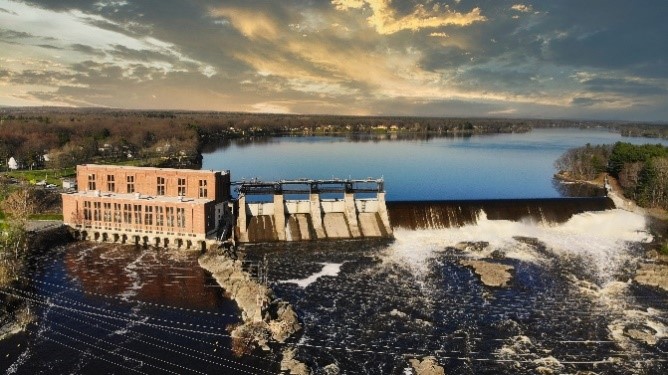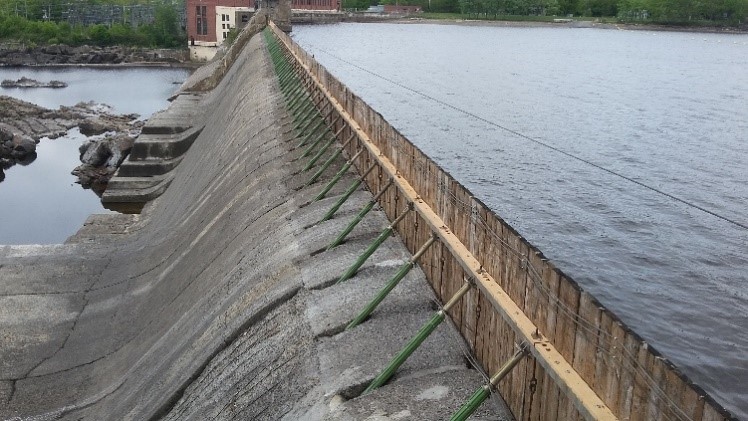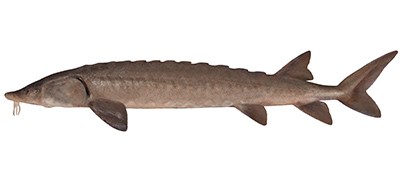Important reminder
In the event of a flood, contact your municipality. They will advise the Ministère de la Sécurité publique du Québec, which coordinates all flood-related activities.
Centre-du-Québec
Spring flooding on the Rivière Saint-François: Our run-of-river stations do not have reservoirs to hold back water
In the Centre-du-Québec region, Hydro-Québec operates two hydropower generating stations on the Rivière Saint-François: Chute-Hemmings and Drummondville. These run-of-river stations cannot store water. They can only let the river’s natural flows, which are inherently unpredictable, run through them.
Managing the river: a complex job

Hydro-Québec is not the only hydropower producer on the Saint-François; there are18 facilities with various owners present in the river’s watershed (municipalities, Ministère de l’Environnement, de la Lutte contre les changements climatiques, de la Faune et des Parcs, private companies, etc.). Hydro-Québec’s facilities are the last on the Rivière Saint-François, so they have little or no impact on the management of water levels and flows.
Ensuring the safety of the public and facilities is a key priority guiding all decisions.
A tool that identifies flows and water levels
We are installing measuring instruments on rivers and reservoirs where we operate dams and generating stations. They provide flow, water level and meteorological data. This data is available to you through a simple tool, which can provide information about flows on rivers and water levels in reservoirs.
Learn more about the Tool
Higher river levels in the summer thanks to our facilities
Located in the heart of the city of Drummondville, our facilities do much more than generate energy. As part of our efforts to enhance the integration of our facilities into their host communities, we increase the water level upstream of Chute-Hemmings generating station in the summer, creating a stretch of river for people to enjoy water activities.


After every spring flood, once the flow of the Saint-François is safe, Hydro-Québec temporarily lowers the river level upstream of Chute Hemmings dam so that our employees can install mobile panels, called flashboards, on the dam’s overflow crest. These panels raise the water level, which remains higher-than-normal upstream of the facility throughout the summer months. Since they would not withstand spring and fall ice jams, the flashboards are removed in fall, before freezing sets in. Not only would they contribute to the accumulation of ice against the dam, but they would most likely be torn off and carried over the overflow crest.
Video: Flashboard installation [in French only]
Go behind the scenes of this complex and unique operation.
You would like to know when the flashboards will be installed or removed?
Sign up for our Project News bulletins by writing to Affairesregionales@hydroquebec.com.
We maintain an ecological flow in the river to meet the needs of aquatic wildlife
The Saint-François is home to a variety of aquatic wildlife, including lake sturgeon, a protected species. During the spring spawning period, which runs from about April to June, Hydro-Québec maintains an ecological flow in the river to promote the spawning success of several fish species. This measure is the subject of a cooperation agreement with Québec’s ministère de l’Environnement, de la Lutte contre les changements climatiques, de la Faune et des Parcs. Thus, depending on natural inflows, ecological flow can have the effect of limiting the rate of rise in water level upstream of Chute Hemmings dam.

Source: Ministère de l’Environnement, de la Lutte contre les changements climatiques, de la Faune et des Parcs du Québec.
Frequently asked questions
In an emergency situation related to spring flooding or any other flood, what are the roles of Hydro-Québec, the Sécurité civile and municipalities?
What is a flashboard? What is it used for?
Why is the river level being lowered earlier than in previous years in the fall?
Is the public notified of the water level variations linked to the installation and removal of the flashboards?
When the flashboards are installed, does Hydro-Québec generate more megawatts?
Why not close the gates completely to speed up the raising of the river level in the spring?
Why does it take so long, even when the gates are closed, for the level upstream of Chute-Hemmings generating station to reach its summer level?
Why can’t Hydro-Québec hold back more water at the generating stations at the Drummondville and Chute-Hemmings generating stations?
Questions on how Hydro‑Québec facilities are managed? Write to us at Affairesregionales@hydroquebec.com.
